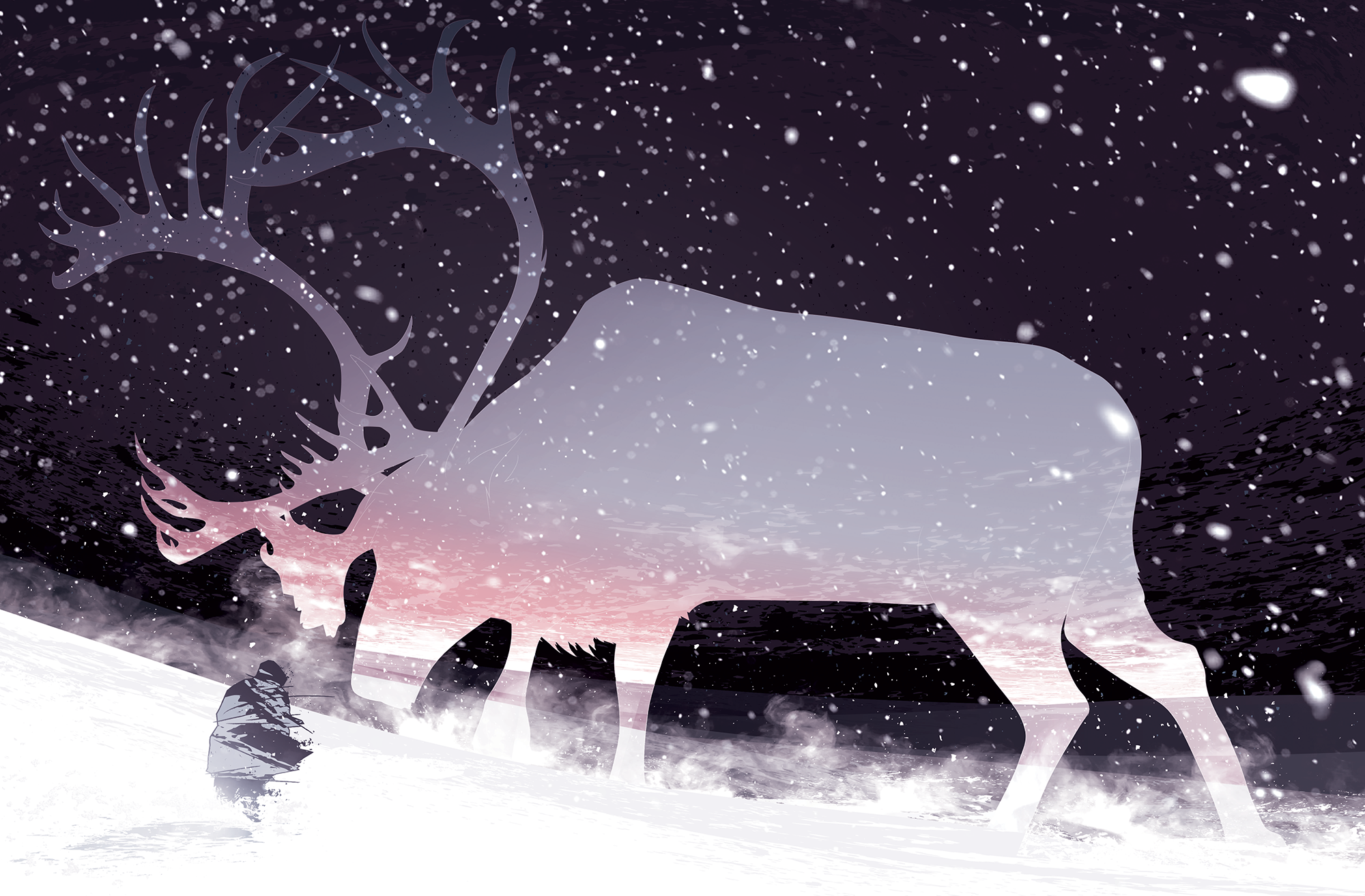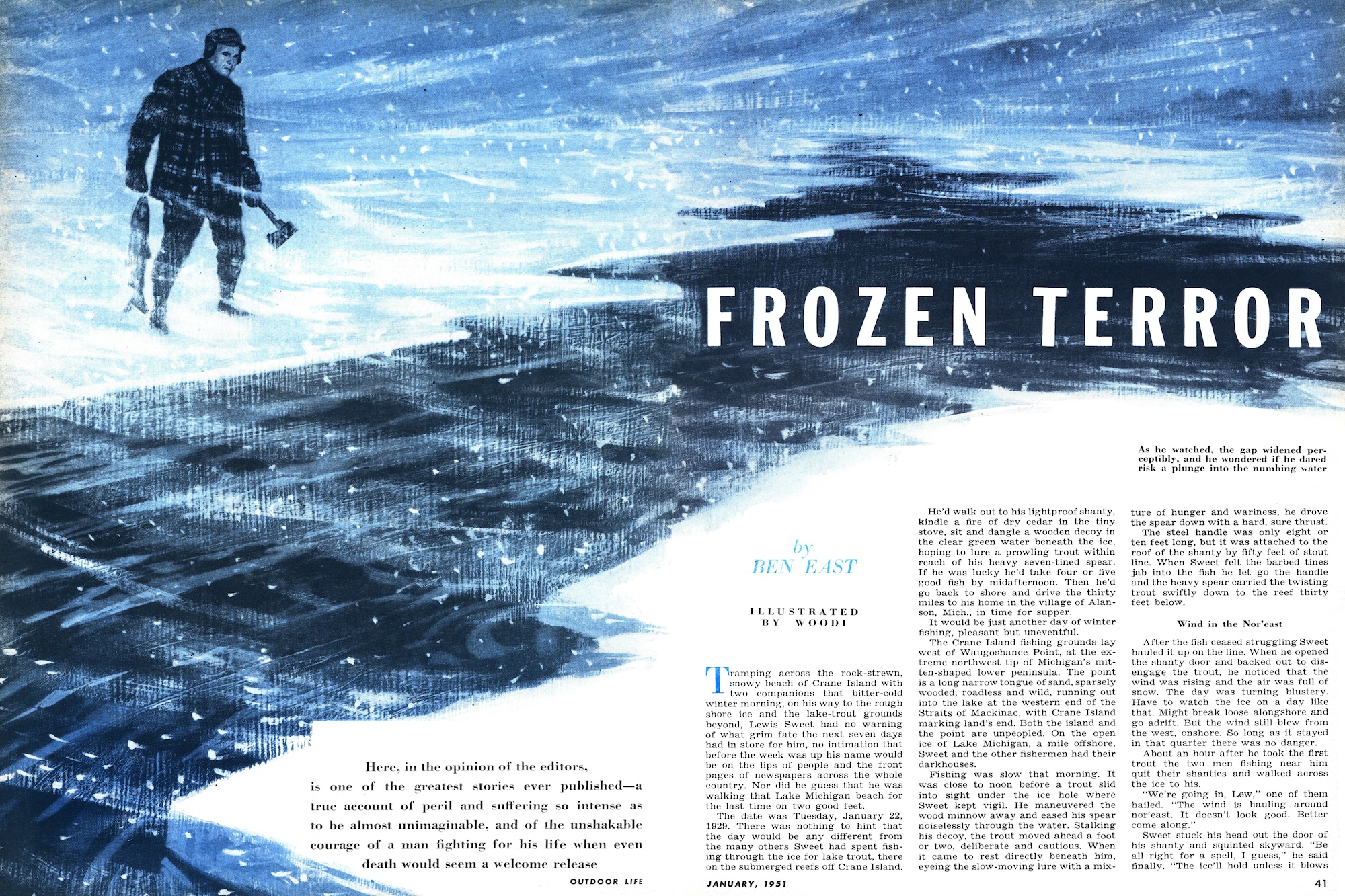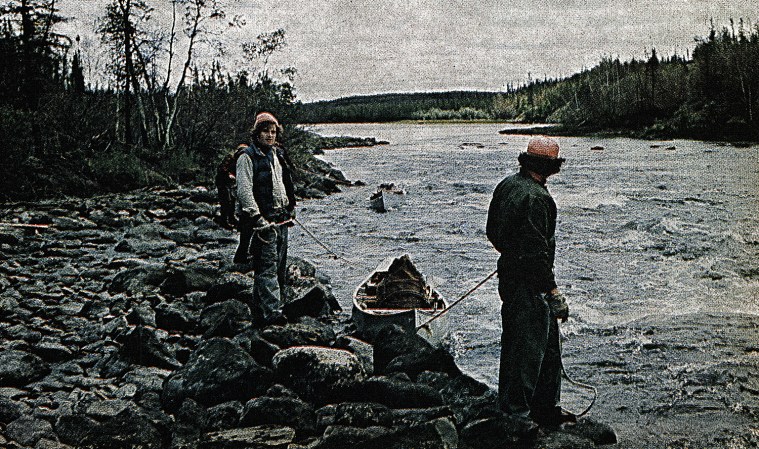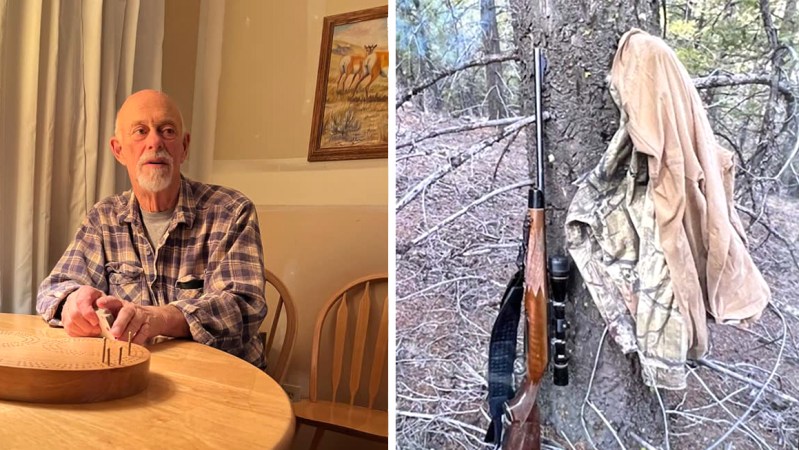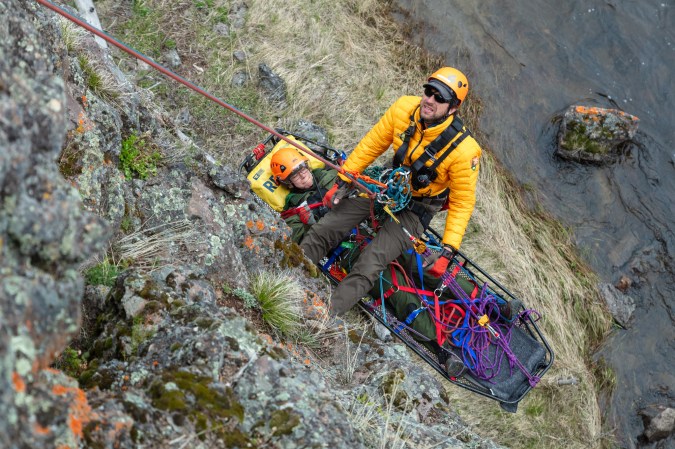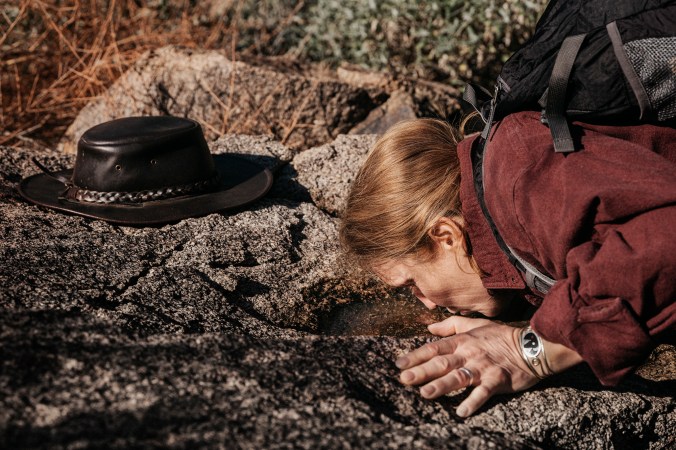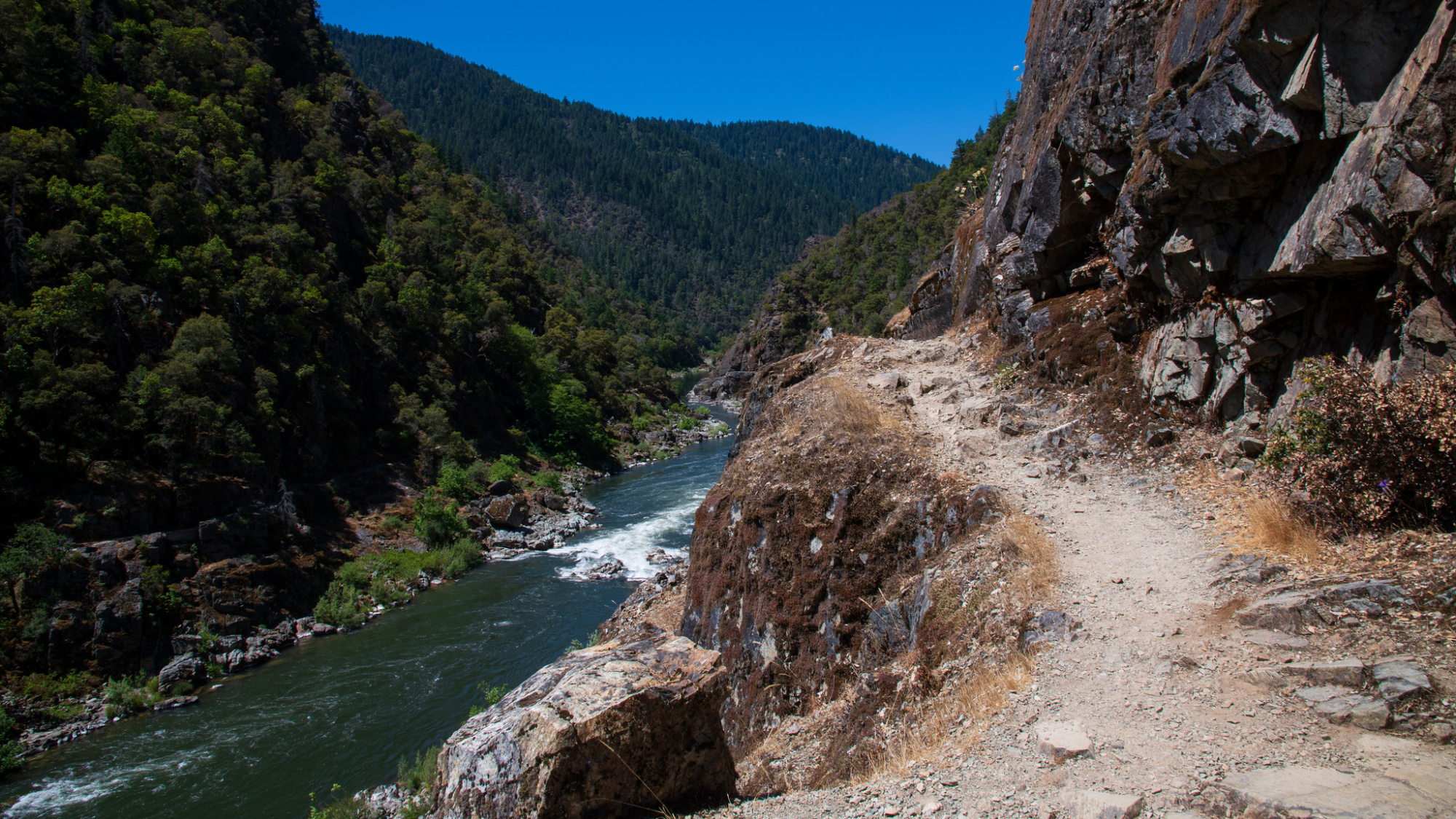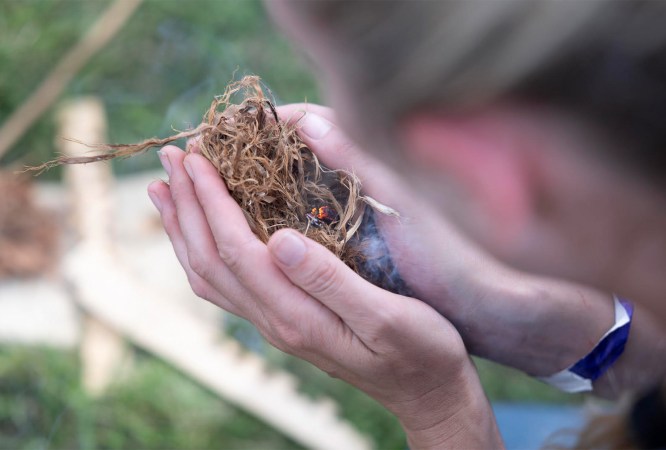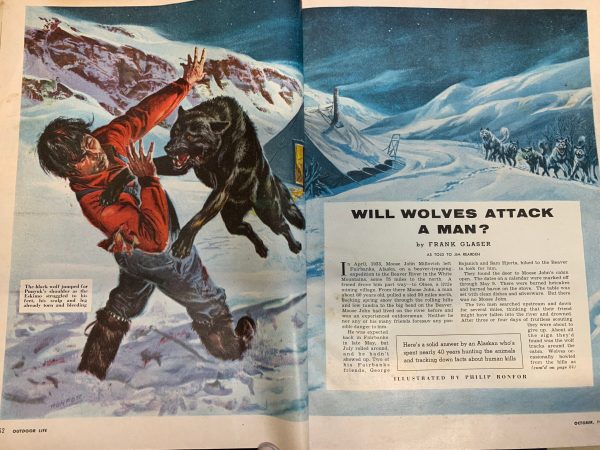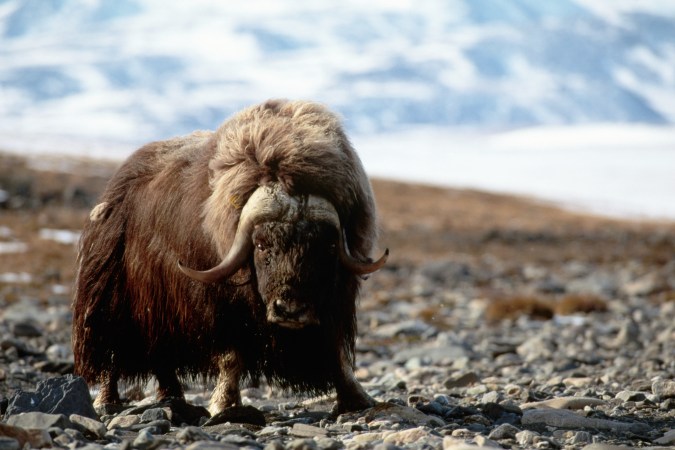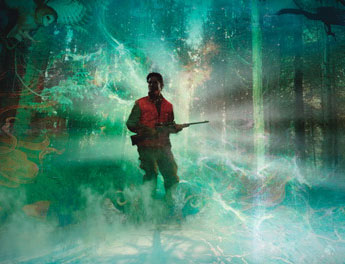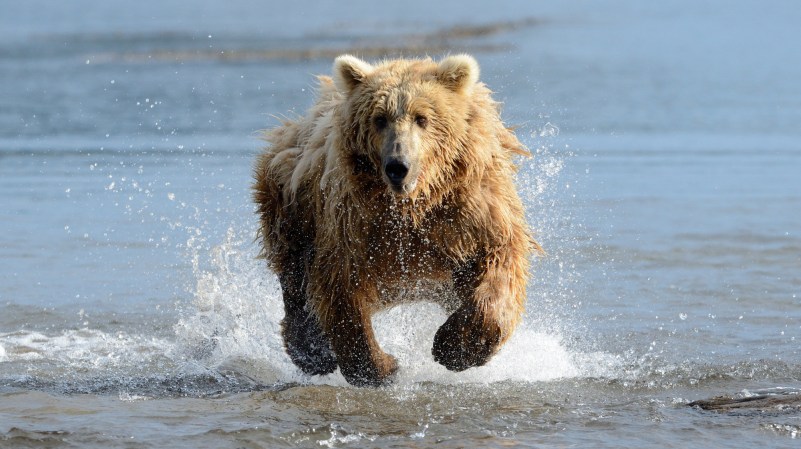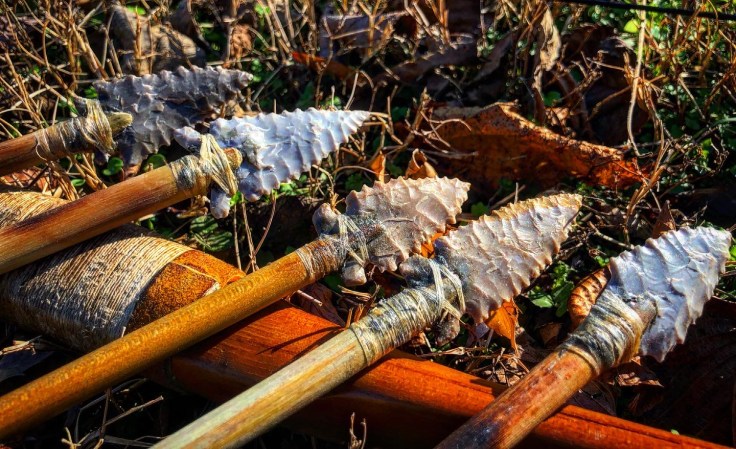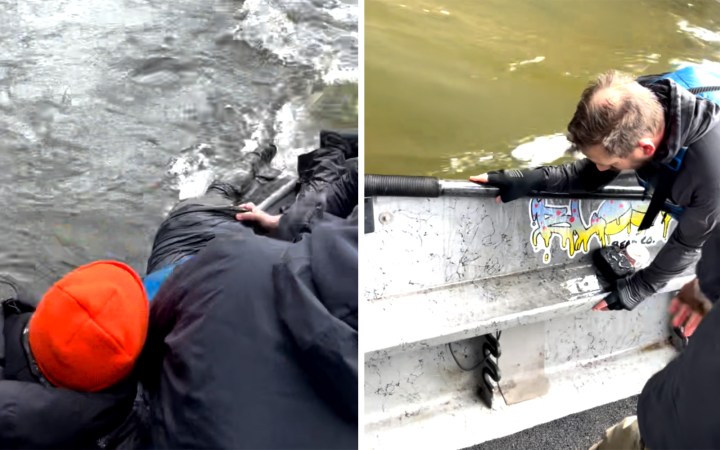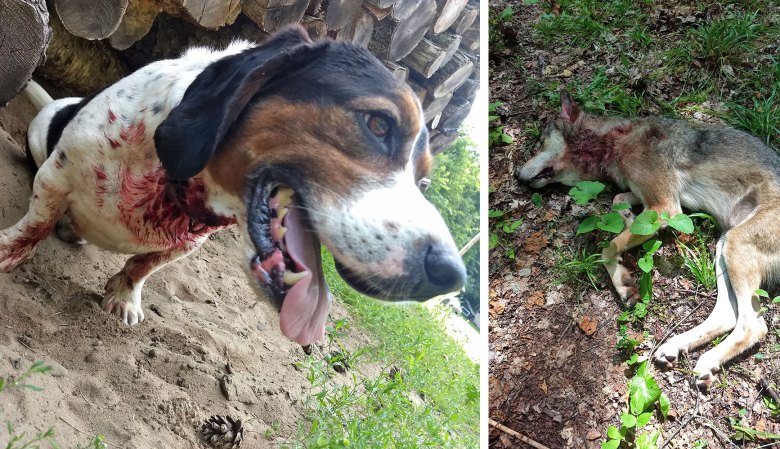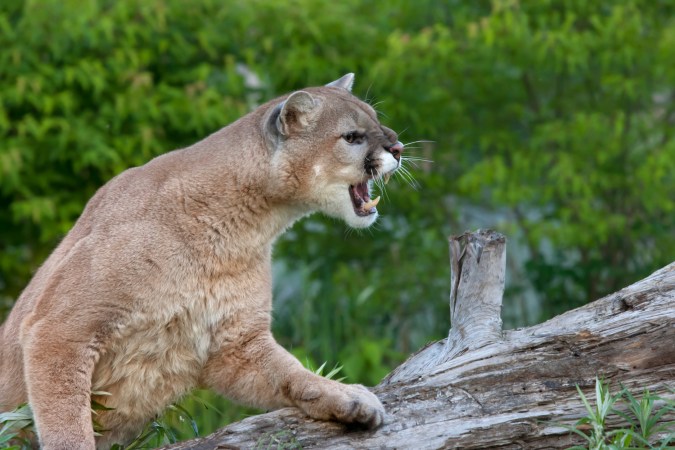A CRUDE SHELTER in a vast winter landscape, the conspicuous lump on the tundra resembles a misshapen, man-made boulder. Its bright blue shell luffs like a loose sail and shudders in the wind. One end of the tarp is fastened to a broken-down snowmobile. The other ends are pulled to the ground and anchored by the snow and rime that have accumulated over the last few days. Inside the makeshift dwelling, two frozen fists clench the tarp.
Curled in the fetal position, the man cannot feel or move his two bare hands, but the rigid muscles in his fingers hold fast, gripping the tarp in bunches and holding it tight to his body. He is dressed, like the hunters who came before him, in traditional clothing made of bearded seal skins and caribou hides. He’s lying on top of a plastic sled with his knees drawn to his stomach, and except for the subtle rising and falling of his chest, he hasn’t moved in days.

He doesn’t see the cloud of snow swirling all around him, and he doesn’t hear the wind howling as it tries to rip the tarp from his body. Instead, he dreams.
He sees white humans and black humans standing over him in a fog. He hears angels singing gospel songs. Alone on the Arctic tundra with a blizzard burying the landscape in white, the man awaits the arrival of ukpik, the snowy owl that, tradition says, shepherds the spirits of the dead to the afterworld.
The People and the Caribou
Before they had snowmobiles and high-powered rifles, the Caribou Inuit who lived nomadically on the west shore of Hudson Bay hunted caribou using canoes and spears. They relied on their knowledge of the terrain and the migration routes the herds used each year. The hunters would float patiently on rivers and inlets, ambushing herds when they were in the middle of a deep crossing.
Much like the tatonka, the buffalo that nourished the Plains Indians farther south on the continent, tuktu provided a way of life for the people of the Arctic Rim. Caribou were the single most important food source on the tundra, and every part of the animal was appreciated and used. Their skins became material for clothing, tents, blankets, and sleds. Their bones, antlers, hooves, and tendons were used to make thread, needles, nets, knives, and other essential tools. Over time, the species came to symbolize endurance and regeneration, and caribou became the spiritual life force of the People.
This sense of reverence that the Inuit held for the caribou was also bestowed on the caribou hunters themselves, who would set out with pride, confidence, and the simple knowledge that hunting tuktu is what they were put on this earth to do. They hunted caribou to survive, but more importantly, they lived to hunt caribou.
They still do. And aside from their tools and tactics, which have allowed them to take up a more sedentary lifestyle, not much has changed for the caribou hunters who live in the Kivalliq region of Canada today.
So when a modern-day subsistence hunter named Ernie Kiinaalik Eetak left his home in Arviat on a solo mission in late November 2021, he carried with him the same fire that his ancestors carried in their bellies. He would need it too, for it was about to get cold.
The Hunt Breaks Down
On this same remote permafrost landscape, well north of the treeline, lies Arviat. It’s one of a handful of small native villages located in the northernmost province of Nunavut on the west shore of Hudson Bay. During the warmer part of the year, this country holds more water than land, and the lack of a proper road system makes traveling inland from the bay difficult or, at times, impossible. But when the snow begins to fall and the rivers and lakes freeze over, the region becomes accessible via snowmobile.
Navigating this flat and seemingly barren landscape is no simple task, however, and without a GPS to guide him, 42-year-old Eetak depended on his wits and memories as he rode his machine across the tundra, following the same routes that his elders had used. The old Polaris two-stroke let out its high-pitched whine as it zipped across the snow, headed west.
Eetak had left his wife and two children after breakfast that morning. He did not plan to be gone for longer than a day, and aside from the double-barreled shotgun slung across his back, he carried little gear. On the small plastic sled that he towed behind the Polaris, there were an extra parka, a bolt-action rifle, a rolled-up tarp, a satchel with a few basic tools, and a can of gasoline. Tucked away in the pockets of his parka he had a knife, a lighter, a pack of cigarettes, a fistful of .243 cartridges, and some 12-gauge slugs. He carried neither food nor water—just a small thermos of coffee.
He rode with the hood of his parka pulled up, looking straight ahead through his caribou-antler sunglasses. Only a sliver of tundra was visible through the two slits carved in the narrow bone, and that was enough. They had already helped him spot five caribou.
It was lightly snowing and slightly foggy, which was typical for late November in that part of the world. The hidden sun hung low in the sky; it was just past noon, and it would set in a few hours.
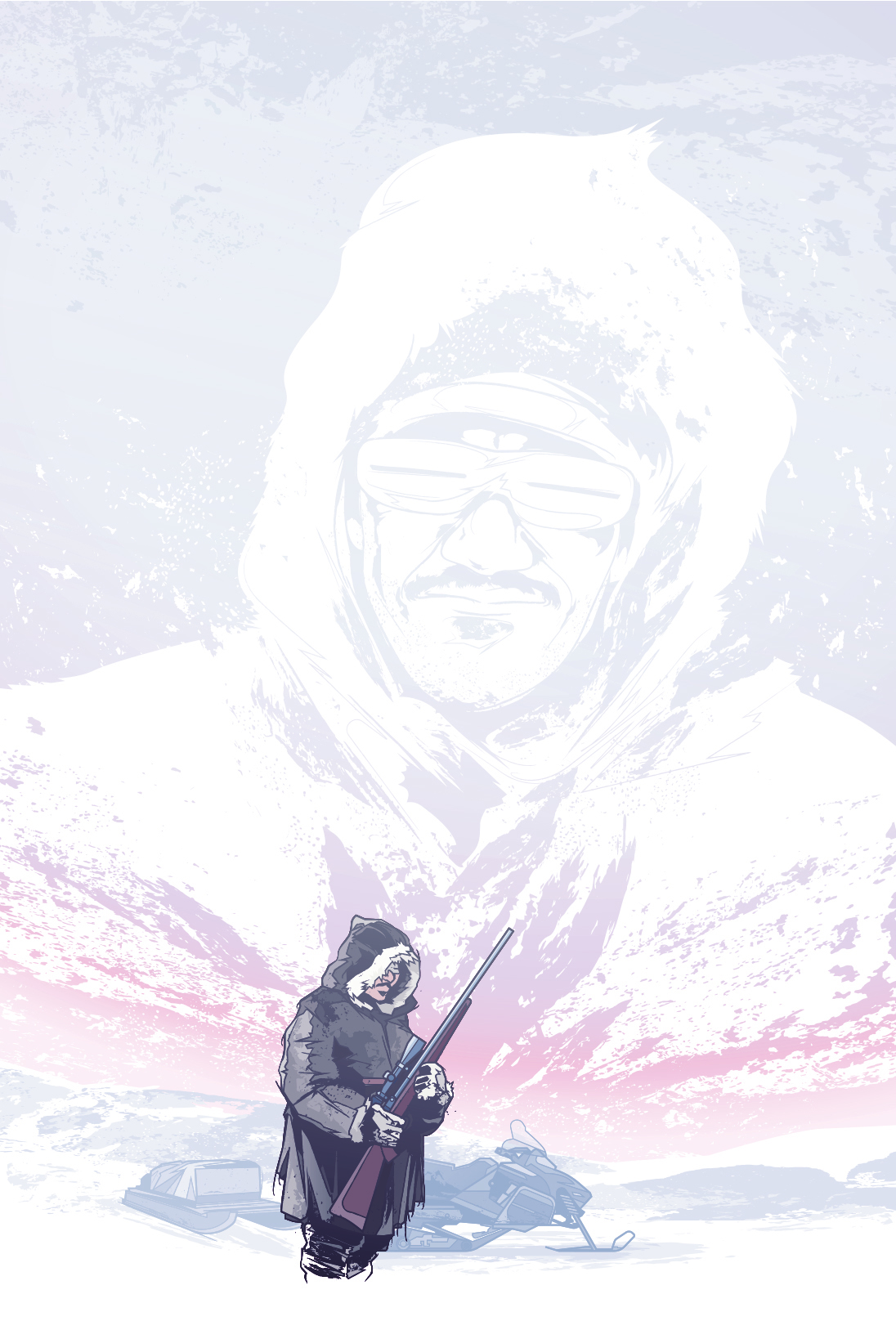
Eetak knew that if he didn’t catch up to the caribou soon, he would have to turn back empty-handed. They were still a ways out, and he was now roughly 50 miles from home. He raced the sinking sun anyway.
On a different day he might have caught them. But the caribou never turned, and Eetak’s machine wasn’t fast enough to close the gap. Still the hunter searched and squinted in the fading light. He marked the last place he had seen the animals, then finally turned around for home.
By the time he could see the village lights, he was maybe 20 miles away. A couple hours’ ride, tops. But then his snowmobile died.
Eetak turned off the engine, opened the gas cap, and saw enough in the tank. Then he got off the snowmobile and walked back to the small sled, where he took off his caribou-hide mittens and rummaged around in the tool satchel until he found a spare spark plug and swapped it out.
The two-stroke fired right up, only to break down again less than an hour later. He tried the ignition. Nothing. Next he grabbed the cord and yanked it to pull-start the engine. He pulled once, then again, and again, but he couldn’t get the machine to run.
So he did the best thing he could think of: Eetak started walking toward town.
Dragging the plastic sled that carried his hunting gear, he walked in a straight line until ice began to crack beneath his boots. He altered course and headed toward a large boulder, a sure sign of solid ground.
By the time he made it there, he was exhausted and decided to take a nap. He fell asleep in no time with his back against the rock.
The Storm
From here, Eetak’s story gets a little fuzzy. The trauma combined with the language barrier made some details difficult to fully comprehend when I interviewed him. But here’s how Eetak tells it.
Hours later, he awoke to a wolverine chewing angrily on his thick boots. The big weasel stood its ground until a groggy Eetak grabbed his lighter, cupped his hand around it, and flicked it on, scaring off the wolverine.
It was clear the weather had changed during his nap. The wind was screaming, the snow blew sideways, and when Eetak stretched his mittened hand out in front of his face, it disappeared before he could straighten his elbow. Everything was white.
He grabbed his sled, tied the rope around his waist, and found his footprints, which he followed as fast as he could to the broken-down snowmobile.
Eetak kept moving when he reached the Polaris. His mind went straight to shelter—he didn’t even try the engine this time. Instead, he started gathering snow to build a small igloo, but every pile he made was whipped away by the wind. When he reached for a tool from the sled and placed his mittens on the machine’s seat, those blew away too, disappearing into the great white void.
Eetak shoved his hands in his pockets and looked around, clenching his teeth as he fought the urge to panic. His mind still on shelter, he unrolled the blue tarp that was lashed to the sled and grabbed a few lengths of cord from his tool kit.
He unhooked the sled, tied two corners of the tarp to the snowmobile, and pulled his gear underneath the windblown tarp. Huddled underneath it, he folded the edges in, cramming them into the snowy ground and weighing them down with tools and guns. When he came across the thermos of coffee, he drained the few sips that were left and sucked on an icicle, imagining it was a cigarette. Then he put on the extra parka, climbed onto the sled now sheltered by the tarp, and curled into a ball.
By 2 a.m. the temperature had dropped to minus 58 degrees F. The wind was howling across the flats and gusting to 90 miles per hour, and Eetak shivered sleeplessly through the morning. Whenever he would start to nod off, wind would catch the tarp, and he would have to grab it to keep it from flying away. He finally got a better hold on the tarp and balled it tightly in his fists.
By afternoon, Eetak’s core temperature had dropped considerably. He was bitterly cold, thirsty, and desperately sleepy, but he was no longer shivering. And by the evening of the second day, he could no longer fight the urge to rest. Sleep swallowed him whole.
That evening, Eetak’s wife Angelina contacted the local search and rescue crew in Arviat. He should have returned home the previous day, she told them, and she hadn’t heard from him. Some of the men on the crew knew her husband, and blizzard or no blizzard, they told her, they would start searching for him first thing the next morning. So she returned home to their two kids, where they looked out the window and waited for the storm to break.
Dying Dreams
Eetak spent five days on the tundra, huddled beneath the tarp while the blizzard raged around him. He was now living in a dream, and the only way out, it would seem, was to die.
And in fact, that’s how he describes it—as Eetak puts it, he did die for five days. What exactly happened to his body in such conditions remains something of a mystery. His account could be taken figuratively, or he could be describing a kind of death of his consciousness: a coma.
Dr. Gordon Giesbrecht operates the Laboratory for Exercise and Environmental Medicine at the University of Manitoba. He’s also been hypothermic 40 times, mostly as a subject in his own studies about how the human body functions as its core temperature drops.
During the first 10 years of his career, the lab had permission from the university’s ethics board to cool people in 46-degree water so researchers could monitor physiological functioning during cooling and rewarming. But getting hypothermia on dry land, he says, is significantly more punishing.
“It’s a brutal experience to become hypothermic in cold air,” Giesbrecht says. “It’s something that usually occurs over many hours, if not days.”
Giesbrecht explains that even “moderately” hypothermic people can develop amnesia — he experienced this firsthand when he was training for a trip to the North Pole. And as the body’s core temperature drops below 82 degrees toward the “severe” stage, he says, “your recollection of what happened can be based on dreams.”
Giesbrecht can’t say for sure whether comas happen at such extreme temperatures, because he’s never been able to test for such a thing. But according to The Merck Manual, the world’s bestselling medical textbook, “central nervous system dysfunction progresses as body temperature decreases; people do not sense the cold. Lethargy and clumsiness are followed by confusion, irritability, sometimes hallucinations, and eventually coma.”
Giesbrecht is struck by the fact that Eetak lost his mittens early on, and he calls this moment “a tragedy” given his knowledge about what happens to bare skin at such temperatures. But he also says that Eetak’s traditional clothing likely made the difference between life and death.
“There are a lot of [studies] done on natural clothing or fur clothing versus the down-filled or synthetic clothing we have down here,” Giesbrecht says. “Most Inuit people aren’t tooling around pulling sleds for fun or adventure—they’re working to make a living, and they’re sitting on a snowmobile rather than skiing. Or they’re sitting still and hunting. So that was really the perfect clothing to protect him from dying of hypothermia.”
The Awakenings
It was still below zero by noon on the fifth day, but the sky was shockingly blue. The sun illuminated the lumpy little shelter, and without the wind, the tundra was soundless.
In Eetak’s dream, he was floating over the ground, looking upward.
But then Eetak took a big breath. And when his eyelids peeled back, he could feel sunlight as it passed through the tarp. He could see it too, but only through his right eye. He was blind in the other. He lay there for a moment, breathing steam, and when he sat up he felt trapped. He looked down at his numb hands. When he drew them toward his body, he saw they were still balled into fists, and the tarp was stuck to his skin. He rocked his weight back and forth, tearing the tarp little by little until he was able to break free.
Standing wasn’t easy either, but Eetak managed it. Then he turned toward home. With the ripped tarp hanging in tatters from his heavy hands, he walked for about an hour before he got lightheaded and collapsed. He landed on his back, his face turned toward the sky. He passed out.
He was awoken by a man shaking him. The rest of the search party was gathered around. They spoke Inuktitut, his native language, but he was too dizzy and confused to understand what they were saying. The next thing he remembers is being towed across the tundra, strapped to a sled and wrapped in blankets.
When Eetak awoke for the third time that day, it was late in the evening on Dec. 2. It had been five days since he’d set out on his hunt. Now he was lying on a hospital bed in Winnipeg as it rolled toward an operating room, where a team of surgeons prepared to amputate both hands above the wrists. Angelina walked with them down the hall, her hand on Eetak’s shoulder.
Home on the Tundra
I spoke with Eetak for the first time in January, about a month after he was reunited with Angelina in the hospital. She held the phone while we talked. Vision had returned to his left eye, and he was getting ready for yet another doctor’s appointment, but he sounded genuinely excited about this one.
“I can’t wait to get my steel hands,” he said. “So I can grab anything and still go hunting.”
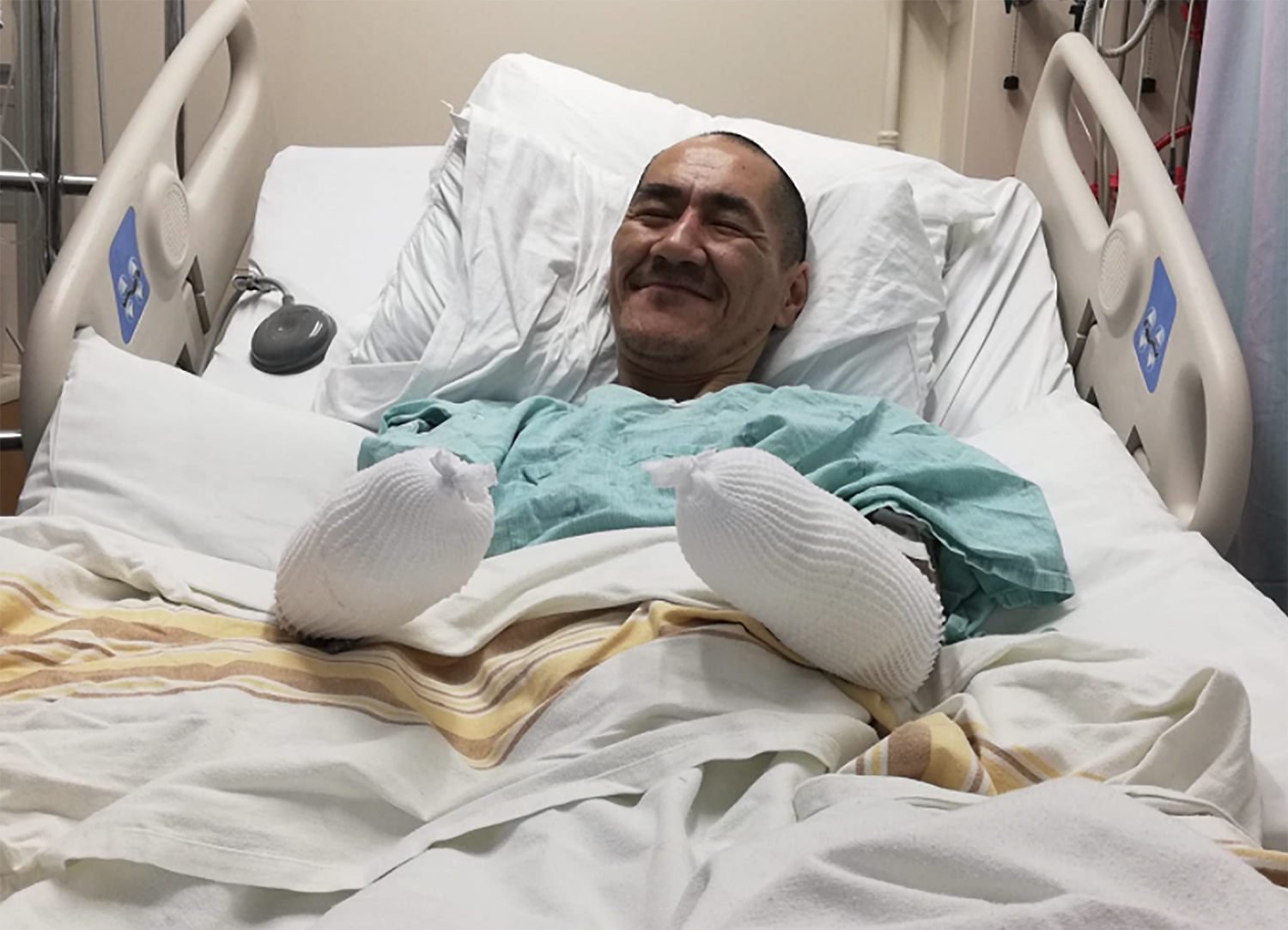
Our conversation drifted through the past, present, and future. He talked about the events leading up to the storm and his experience under the tarp—or at least what he was able to remember from it. He described how happy he was to hear the ambulance siren wailing as it rushed him to the hospital in Winnipeg. And at one point, he told me about a distinct moment that occurred during his first day alone in the hospital after the surgery.
Read Next: The Best Survival Knives, Tested and Reviewed
“When I was in Winnipeg for the first time, I was sitting in the hospital room,” Eetak said. “And an eagle landed on my window, a big eagle. And I was so surprised. I was so happy to see a big eagle.”
I told him I thought that was a good sign, and he laughed and agreed. He would be going home soon.
This story first ran on April 6, 2022.

